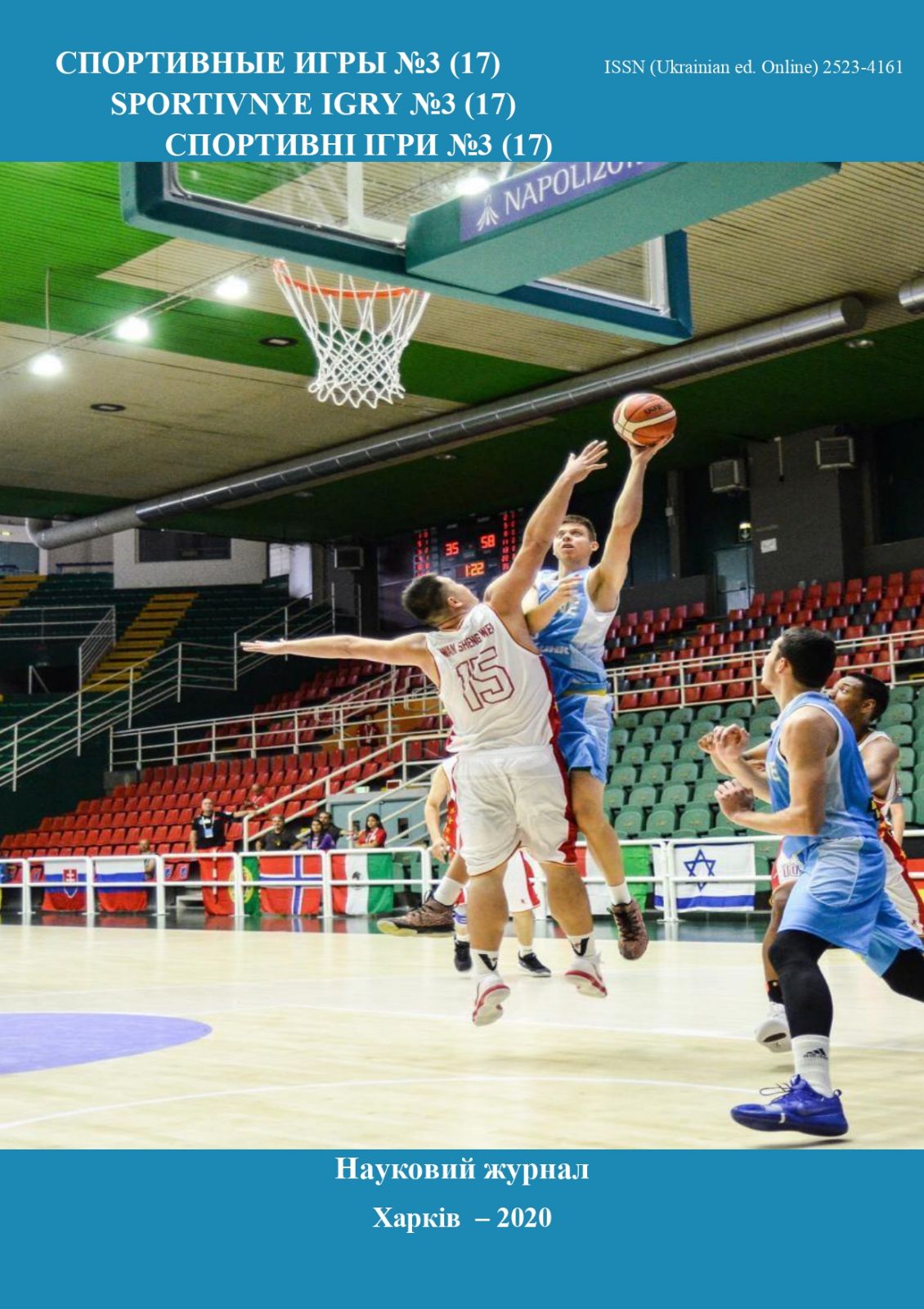Порівняльний аналіз показників моторної функціональної асиметрії у студентів спортивної спеціалізації бадмінтон, теніс
DOI:
https://doi.org/10.15391/si.2020-3.11Ключові слова:
функціональна асиметрія, бадмінтон, теніс, сенсорна реакція, зоровий сигналАнотація
Мета: провести порівняльний аналіз показників моторної функціональної асиметрії у студентів спеціалізації бадмінтон, теніс. Матеріали та методи. Для вирішення завдань дослідження використовувалися наступні методи: аналіз науково-методичної літератури, педагогічне тестування з використанням інструментального методу, методи математичної статистики. В дослідженні проведене тестування моторної функціональної асиметрії у бадмінтоністів і тенісистів з використанням спеціальної комп’ютерної програми. В дослідженні прийняли участь студенти Харківської державної академії фізичної культури 7 бадмінтоністів та 9 тенісистів, які мали кваліфікацію від майстрів спорту України до 1 розряду. Результати: доведено, що чим вище рівень кваліфікації спортсменів, тим менше різниця в показниках тестування в моделі. Педагогічне тестування виявило достовірні зміни у бадмінтоністів в кількості натискань лівою та правою руками, що вказує на стійкість функціональних показників моторної
асиметрії. У тенісистів достовірні зміни були в кількості натискань та часі зорово-моторної реакції правою рукою. Для лівої руки достовірні зміни визначилися у коефіцієнті варіації часу реакції та мінімальному значенні реакції. Це підтверджує думку про більше використання лівої руки, ніж у бадмінтоністів. Висновки: встановлено, що для планування та удосконалення тренувального процесу в бадмінтоні, тенісі необхідне вивчення та оцінка моторної функціональної асиметрії спортсменів. Результати дослідження можна використовувати в тренувальному процесі для оцінки показників моторної функціональної асиметрії, у підборі методики навчання та удосконалення техніко-тактичних дій та спрямованості підготовки спортсменів в бадмінтоні, тенісі.
Посилання
Ашанин, В.С, & Романенко, В.В. (2015). Использование компьютерных технологий при оценке сенсомоторных реакцийв единоборствах. Слобожанскийнауково-спортивний сбірник, 4 (48), 15-18.
Беленко, И.С. (2009). Психофизиологические особенности у юных спортсменов игровых видов спорта разного возрастного периода развития и тренированности. Вестник ТГПУ, 3 (81), 54-58.
Вознюк, Т. (2008). Психомоторика юних баскетболісток у віковому аспекті. Молода спортивна наука України, І. 91-97.
Губа, В.П., & Маринич, В.В., (2016). Теория и методика современных исследований. Монография, Спорт, 232.
Доброхотова, Т.А, & Брагина, Н.Н., (2004). Методологическое значение принципа симметрии в изучении функциональной организации человека. Меthodological signifi cance of symmetry principle in studying human functional organization. Научный мир, 53.
Дудник, О.К. (2010).Функціональна організація психофізіологічних станів організму людини в умовах напруженої м’язової діяльності. Монографія. 129.
Коробейников, Г.В., Коробейникова, Л.Г., Мищенко, В.С., & Рычок, Т.М., (2014).
Функциональная межполушарная асимметрия мозга и когнитивные функции у элитных борцов. Вопросы функциональной подготовки в спорте высших достижений, 2, 53-63.
Коробейникова, Л.Г., (2014). Влияние уровня функциональноймежполушарнойасимметрии мозга на возможности проявления психических функций в единоборствах. Ученые записки Таврического национального университета им. В. И. Вернадского, Т. 27 (66), 2, 103-112.
Коробейніков, Г., Коробейнікова, Л., Вольський, Д., & Го, Ш., (2018). Функціональна асиметрія мозку і когнітивні стратегії у спортивних єдиноборствах. Теорія і методика фізичного виховання і спорту, 2, 73-77.
Ровний, А.С. (2002). Психофізіологічні основи спеціальної працездатності спортсменів у спортивних іграх. Педагогіка, психологія та медико-біологічні проблеми фізичного виховання і спорту, 22 , 45-52.
Ровний, А.С. (2002). Психофізіологічне сприйняття зорової інформації рухової діяльності людини. Педагогіка, психологія та мед.-біол. пробл. фіз. виховання і спорту, (26), 17-23.
Романенко, В.В., & Веретельникова, Н.А. (2020). Методика оцінки моторної функціональної асиметрії одноборців. Єдиноборства, 67-77. doi:10.15391/ed.2020-1.07
Таймазов, В.А., & Бакулев, С.Е. (2006). Значение функциональной асимметрии как генетического маркера спортивных способностей. Ученые записки, 22, 74-82.
Улан, А.М. (2018). Підходи до орієнтації підготовки спортсменів у різних видах спорту з урахуванням функціональної асиметрії. Молодь та олімпійський рух: зб. тез доповідей Міжнар. наук. конф. молодих учених,209.Доступно:http://www.unisport.edu.ua/content/naukovikonferenciyi-ta-seminary.
Улан, А, & Шинкарук О. (2019). Функциональная асимметрия в спорте: особенности проявления и подходы к использованию в процессе ориентации подготовки фехтовальщиков. Наука в олимпийском спорте, 1, 24-35. doi:10.32652/olympic2019.
Shynkaruk, O. (2017). Assessment of psycho-physiological characteristics of the representatives of cyclic sports. Materials of the International Scientifi c Congress «Sport. Оlympism. Health», 140.













